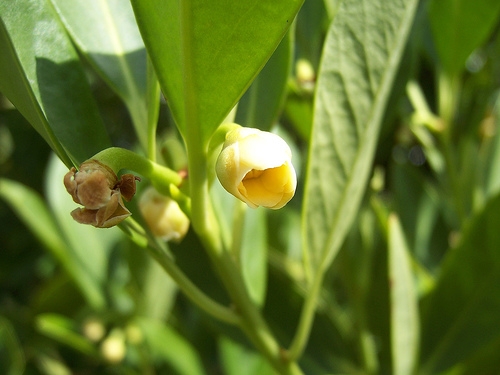Yellow Anise Tree
(Illicium parviflorum)
Yellow Anise Tree (Illicium parviflorum)
/
/

Andrew69. assumed
CC BY 3.0
Image By:
Andrew69. assumed
Recorded By:
Copyright:
CC BY 3.0
Copyright Notice:
Photo by: Andrew69. assumed | License Type: CC BY 3.0 | License URL: https://creativecommons.org/licenses/by/3.0 | Uploader: Andrew69. | Publisher: Wikimedia Commons | Title: Yellow_anise_flower.jpg | Notes: {{Information |Description={{en|Inga feuillei (leaves and seedpods). Location: Maui, Olinda }} |Source=*[[:File:Starr_070328-6185_Inga_feuillei.jpg|]] |Date=2010-05-05 09:11 (UTC) |Author=*[[:File:Starr_070328-6185_Inga_feuillei.jpg|]]: [http://www.hear.o |





















Estimated Native Range
Summary
Illicium parviflorum, commonly known as Yellow Anise Tree, is an evergreen shrub or small tree native to moist, shaded understory environments and swampy areas in the southeastern United States, particularly Florida. It can reach up to 7 meters in height and often develops multiple trunks. The plant features lanceolate leaves that emit a licorice-like fragrance when crushed. Its small, pale yellow flowers, about 1 centimeter in diameter, have 11 to 14 tepals and are not particularly showy, but they do add a subtle charm in late spring to early summer. The fruit is a star-shaped aggregate of follicles, each releasing one shiny brown seed upon opening.
Yellow Anise Tree is valued for its aromatic wood, foliage, and flowers, and its dense growth habit makes it suitable for use as a hedge or windbreak. It can spread to 4.5 meters wide if not pruned. The plant is adaptable, easy to grow, and generally free from major pests. It can be trained into a tree form by removing lower branches. Yellow Anise Tree thrives in USDA hardiness zones 6-9 and prefers part shade to full shade, with medium to high water requirements and well-drained soils. It is commercially available and relatively inexpensive, making it an accessible choice for gardeners.CC BY-SA 4.0
Yellow Anise Tree is valued for its aromatic wood, foliage, and flowers, and its dense growth habit makes it suitable for use as a hedge or windbreak. It can spread to 4.5 meters wide if not pruned. The plant is adaptable, easy to grow, and generally free from major pests. It can be trained into a tree form by removing lower branches. Yellow Anise Tree thrives in USDA hardiness zones 6-9 and prefers part shade to full shade, with medium to high water requirements and well-drained soils. It is commercially available and relatively inexpensive, making it an accessible choice for gardeners.CC BY-SA 4.0
Plant Description
- Plant Type: Shrub, Tree
- Height: 10-15 feet
- Width: 6-10 feet
- Growth Rate: Moderate
- Flower Color: N/A
- Flowering Season: Spring, Summer
- Leaf Retention: Evergreen
Growth Requirements
- Sun: Part Shade, Full Shade
- Water: Medium, High
- Drainage: Medium
Common Uses
Bank Stabilization, Bird Garden, Border Plant, Deer Resistant, Erosion Control, Fragrant, Hedges, Low Maintenance, Potted Plant, Salt Tolerant, Street Planting, Water Garden
Natural Habitat
Moist, shaded understory environments and swampy areas in the southeastern United States, particularly Florida
Other Names
Common Names: Small Anise Tree , Yellow Anisetree , Yellow-Anise , Swamp Star-Anise
Scientific Names: Illicium parviflorum , Illicium anisatum , Badianifera parviflora , Cymbostemon parviflorus
GBIF Accepted Name: Illicium parviflorum Michx.